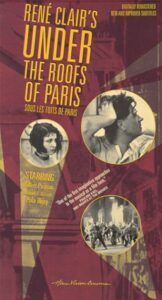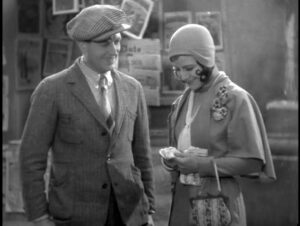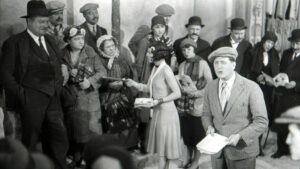“Under the Roofs of Paris” – the Cheerful Bustle of a French Street

Title: “Under the Roofs of Paris” (“Sous les toits de Paris”)
Release Date: 1930
Director: René Clair
Cast: Albert Préjean, Pola Illéry, Gaston Modot, Edmond T. Gréville
“Under the Roofs of Paris” is the first French sound movie and the quintessential comedy cinema of René Clair. With it, the director launched the folk trend, whose characters are ordinary people from the social lowlands, and humor is intertwined with lyricism. To spin the story here are used images and light street songs, which replace long dialogues and build an iconic image of the city on the Seine – full of bustle, charming cafes and bohemian fraternizing with the proletariat.
“Under the Roofs of Paris” – a musical film about a love adventure
“Under the Roofs of Paris” is a pleasant comedy, the plot of which is set on the streets of the pre-war French capital. The film tells the story of a young Romanian immigrant (Pola Illery), who arouses the warm feelings of three bachelors: the slaughterer Fred (Gaston Modot), the street singer Albert (Albert Prejean) and his friend Louis (Edmond T. Greville). When Fred appropriates the key to Pola’s apartment, the woman spends the night at Albert’s house, which, after initial disagreements, results in an explosion of romantic feeling. However, when Albert is about to propose, he is unfairly accused of theft and sent to jail for several weeks. Everything is explained and the man returns home, but it turns out that Pola has become involved with his friend Louis. However, there are many indications that the girl still loves Albert.
“Under the Roofs of Paris” is the first French sound movie, which, like many of the first works after the sound breakthrough, can be described as a “silent sound film,” that is, basically a film constructed about the principles of silent cinema, with sound elements such as songs and dialogue parts. Nevertheless, we often have to deal with asynchronous sound here, although there are also many successful scenes with sound only, such as the amusing argument between Albert and Pola, which takes place in the dark – only the exchange of words can be heard.

At the same time, pantomime still plays a very important role. René Clair, like Charlie Chaplin, viewed the sound breakthrough with great skepticism and wanted to emphasize the charm of silent cinema, the best expression of which is the scene of Albert and Louis arguing in a cafe. We watch it through the glass without hearing a word, but the eloquent acting of the actors says it all.
“Under the Roofs of Paris” – the quintessential René Clair comedy
René Clair, who started out as an avant-garde filmmaker in the 1920s, quickly became interested in entertainment cinema. Comedy became his favorite genre. What’s more, starting with “Under the Roofs of Paris,” he brought ordinary folk characters to the big screen, placing the action on the streets of the French capital. In combination with such assets as the synthesis of comedy and lyricism (eminently inspired by Chaplin), the introduction of numerous singing parts, the mobility of the camera and the rhythmicity of the narrative, the director managed to create a unique atmosphere of Paris and reflect the nature of its inhabitants.
What draws attention here is the freedom in the depiction of erotic relations, emphatically testifying to the difference of European cinema of that period from American films subject to censorship. Love is not treated with deadly seriousness and romanticism in Clair’s film, but with a surprising dose of realism. A woman who, while her partner is in prison, falls into the arms of his friend to ensure her livelihood is treated with understanding.

The same is true in the bittersweet finale of the comedy “Under the Roofs of Paris”. Despite the fact that Albert and Pola have their sights set on each other, they do not stay together – as in life: dreams are intertwined with reality, and cheerful songs allow to survive difficult experiences. Therefore, “Under the Roofs of Paris” is a film that, while extolling the French capital and introducing motifs that will become iconic in portraying this city, at the same time successfully avoids creating its idealized myth.
Literature:
„Kino klasyczne”, pod red. T. Lubelskiego, I. Sowińskiej i R. Syski, Kraków 2012.
A.Garbicz, J. Klinowski, „Kino, wehikuł magiczny. Przewodnik osiągnięć filmu fabularnego. Podróż pierwsza 1913 – 1949, Kraków 2007.

